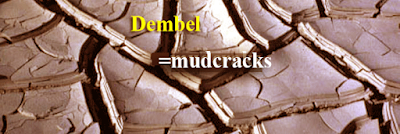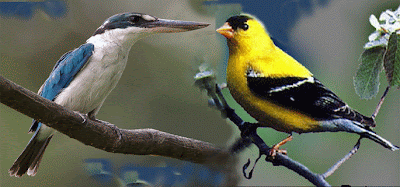
Evolution and development of languages apparently progressed from simple smaller words to larger words. Some of the earlier simple and small words became part of the later complex words either as prefixes, suffixes or median components.
In Kannada the familiar spatial suffixes or village- indicators are –uru, -halli,- pete, -palya, etc. These familiar word-suffixes are still prevailing in current usage.
However, Tulu language has preserved several uncommon spatial suffixes that point to certain earlier stage of evolution of the language. Some of the suffix words appear rather uncommon because they are no longer exist in current usage except in toponyms (place-names).
The study of such extinct Tulu suffixes has special linguistic significance since these could have existed in other sister Dravidian languages also during an earlier historical stage of evolution of the language. We can also endeavor to trace tidbits of evolutionary trend in the sequence of word formations during the course of history.
One such generally extinct spatial suffix is –va (or '-wa').
1.Spatial suffix -va
We can see several ancient toponyms ending with –va in the Karavali area. Some typical examples are:
Shirva, Kakva , Urva, GOA,(also Uruval or Urva+al ),
Let us analyse some of these place names:
Shirva = (Shir+va). A place of divine rock. Shira represents rock which was considered as a symbol of divinity by the early cultures. The word Shira and Siri apparently originated in Mediterranean/African region and was brought here by early immigrant tribes. (See earlier post on Shira.)
Kakva =(Kakk+va).. A place inhabited during early history by Kakke tribes, presently extinct. Kakva is presently a hamlet near Atikaribettu northeast of Mulki town. There is one more
Kakve near Koila vilage Puttur Taluk.
Urva = (uru+va). The word Uru or Ooru represents (1) earth, (2) Village or (3) Town. Uru or Ooru is a word borrowed from ancient Sumerian civilization by immigrant Dravidians during early history. Thus, Urva is a habitation place,locality or village. Presently Urva is an urban extension within Mangalore city.
GOA. (goh+va).Goh=cow, va=habitation.Goa: A region inhabited by cattle and cattle herders, historically.The place name Goa was translated as 'Pashupe' in Madvavijaya.
Sarve (<.Sarava; sara+va+e). Sara=lake or waterbody. Therefore ‘Sarve’ is a locality by the side of a lake.( Sarve is a modified form of original Sarva or Sarava). Sarave is a village in Puttur Taluk.The original lake apparently has been dried up now.
Sharavu (<.Sarava; sara+va+u). Represents a locality on the bank of a lake.Presently, Sharavu is locality in the heart of Mangalore city famous for a Ishvara and Ganapati temple. Originally the temple might have been on the bank of a lake.Now there is no lake in the neighbourhood of Sharavu temple, except for the temple pond(Kalyani). There is another
Sharavoor hamlet near Alankar village in Puttur Taluk on the bank of River Kumardhara
Adve =(< aDva), ( pronounced ‘aDve’)=aDavi=forest or woods. Presently Adve is the name of a hamlet near Padubidri on Karkal road. It appears that the Adve area was a thick forest during early history.The word ‘aDavi’ is the Kannada equivalent of the same.
Ad+va =possibly a wooded area. The ‘aD’ root word represents (1) wood or tree; as In ‘aDar’(=wooden twigs)and (2) to cook. Note here that the two meanings of the word ‘aD’ namely (a)wood and (b)cook are mutually related in the sense that in the primitive societies wood was ignited for cooking food. In other words the verb ‘aD’ (=to cook, as in ‘aDpini’, ‘aDuge’, ‘aTil’(aD+il),’aDDe’ etc) was derived from the root word ‘aD’(=wood , plant or tree) which was the earliest invented fuel for cooking.
Irava (pronounced yirava or eerava; irava=Ira+va). A habitation of Ira or Irava ( or Iruva) tribes. The word signifying Ira tribes (yira or yire=leaf) exists as an place name
Ira= A colony of Ira tribes.
Other compound village names are:
Iruvail=Irava+(b)ail). A valley field occupied by Irava/ Iruva tribes.
Iravattur= Irava+attur. A village on the other side or bank inhabited by Iruva tribes.
( Note the vocalic parallelism between the tribal designations of ‘Irava’ and ‘YaDava’(>(a) Yādava,(b) YeDava(c) Ilava or Elava).
Kalwa (Kal+Va) (a Station in Central Railway, Mumbai). This place with rocky bedded natural canal forms the( of eastern branch of Ulhas River, which empties out to Thane Creek, Mumbai,the other main branch being debouching into Arabian Sea at Bhayandar, aka Vasai Creek. Kaluve or Kalve in Dravidian languages means tributary.This canal-like river tributary is now mostly hidden from view due to reclamation and construction of river over-bridges and railway bridges after Thane Station.
There are place-names with va as prefix. For example:
Vakola (Va+Kola), a marshy area in Bandra-Kurla-Santa Cruz zone, Mumbai.
Vasai creek:near Thane, Mumbai. Vasai was once a Buddhist place.It had a Stupa, dating back to pre-Christian era.
2. Compound suffix -val
The suffix –va has been combined with fluvial indicator –al to form a compound suffix –val to represent habitations on the bank of rivers.Note the following examples like Bantval and Uruval.
Bantvāl=(Bant+va+al). Al represents a river or a stream. Thus, compound suffix -val represents a locality on the bank of a river . A Bunt colony on the bank of river. Bantval town now cosmopolitan is located on the bank of River Netravati.
Uruvāl=(Uru+va+al). Uruval is a village(uru) place by the side of a river. Presently Uruval is a hamlet of Kuppettu village (Belthangadi taluk) located on the Guruvayankere-Uppinangadi road. There is a small stream flowing by the side of the hamlet of Uruval (There is another Tulu word ‘uruvol’ that is used for a sliding bamboo gate that Is erected to protect village properties.)
3. Compound suffix –vayi
‘Ayi ‘ is another Tulu/Dravidian spatial indicator. Aya=dimension. The suffix –va has been compounded with –ayi or –ai in some village names. For example: Peruvayi, Beluvayi.
Peruvayi. (Peru + vai).Peru= large .Thus, Peruvayi represents a large village or tribal settlement . Peruvayi presently is a village In the southern part of Bantval taluk.
Beluvayi is a village located between Mudabidre and Karkala.
4.Compound suffix –vase
The spatial suffix has been joined with another spatial suffix –se(or –shey) to form –vase or- vaashe compound suffix. For example, Kervashe, Amavase bail, Banavasi, Vashi, Kumbashi etc.
Kervāse: (Ker+va+se). A locality by the side of a lake. (kere). Kervase is a village in Karkal Taluk, Udupi district.
Amvāse bail: (Am+va+se+ bail). Amm possibly refers to an ethnic group dedicated to Amma (mother Godess) worship. Amvase bail is a remote village in Kundapura Taluk, Udupi district.
Banavasi: (bana+va+se). A settlement by the side of forest. A temple town near Sirsi, Uttara Kannada district, famous for relics of Kadamba dynasty.
Vashi: (va+shi). A habitation. A village name from Maharastra. (Vasa= habitation,accomodation).
Kumbashi: ( Kumb+va+se).A village in Kundapura taluk, Udupi district.
5. Evolution of the suffix –var
Though the existence of the antique spatial suffix –va has been explained above in the context of Tulu language and toponyms, it is not exclusive to Tulu but was a common feature of Dravidian languages. This we can realize when we trace the evolution of the suffix –va further along the timeline of thr history and development of the language.
Let us analyse some evolved spatial suffix like –vara or –avara. Note that the suffix –va has had an variant namely –ava, wherein the initial a was mild or almost mute in the beginning.
The -ar (or -ara) is another spatial suffix mostly representing open fields with even surface (somewhat like modern football grounds). The spatial suffix –ar (For example: Bolar, Todar,Adyar,Mijar etc) has been discussed in our earlier posts.
(a)va+ar= (a)vār.
‘Avara’ means an open space in several Indian languages.
There are spate of villages ending with suffix –avar not only in Tulunadu/ Karavali but all over Indian subcontinent showing the spread and/or influence of the Dravidian language group.
Attāvar, Neelāvara,Brahmavara,
Attavara. (atta+va+ara). Atta= other side (of river). Hence Attavara represents an open field/ ground on the other side of the river.Presently, Attavara is an extension in the heart of Mangalore city. The river alluded to in the toponym has been dried up leaving a valley as a relict evidence.
Brahmavara. (Brahma+va+ra). An open field dedicated to the God Brahma. Brahmavara is a prominent town north of Udupi along the NH17. The worship of Lord Brahma connoted in the toponym has been abandoned during the passage of history.The cult of Brahma worship (ca. 1500 BC – 400 CE) once dominant all over India including Karavali has remained in vestial state as ‘Bermer’ in Garodis of Tulunadu.
There are places with suffix –avara in other regions of Karnataka and Indian subcontinent.
Bānāvara (Hassan district, Karnataka)
Kārvāra(Uttara Kannada dist, Karnataka)
Dharmāvaram (Tamilnadu).
Peshāvar (Pakistan)
Some more spatial suffixes.
Suffix -Varse (va+ar+se) or averse or simply -arsey:
Avarse:(a+va+ar+se): a village in Udupi district and another village (Avarsa) near Karavar,Uttara Kannada.
Teggarse: (tegga+ar+sey). An open field of village with teak trees. (tega=teak).
Vasre: (va+se+arey): A village in Kundapur Taluk, Udupi district
6.Divine spatial suffix : Isha+avar
With the introduction of temple culture in ancient Indian cities (ca.4th Century CE onwards) the temple towns were named after the divinities installed.
Ishvara= yIsha (=God)+ avar(field)= Field of God!
There are abundant place names all over India that end with the suffix –ishvara:
Odi bande+ishvara= Odabhandeshvara .(Udupi dt, Karnataka)
Kota+ishvara=Koteshvara.(Udupi dt, Karnataka)
Pandi+ishvara = Pandeshvara.(Dakshina Kannada & Udupi dt, Karnataka)
Rama+ishvara+Rameshvara (Tamilnadu)
Soma+ishvara=Someshvara.(Dakshina Kannada & Udupi dt, Karnataka)
Manja+ishvara=Manjeshvara (Kerala)
Muruda+ishvara=Murudeshvara (Uttara Kannada, Karnataka)
Dhara+ishvara=Dhareshvara(Uttara Kannada, Karnataka)
Mahabal+ishvara=Mahabaleshvara (Maharastra)
Naga+ishvara=Nageshvara (Telugu proper name)
Nila+ishvara=Nileshavara (Kerala).
Triambaka+ishvara+Triambakeshavara(Maharastra).
Bhubana+ishvar=Bhubaneshvar(Orissa)
Sanke+shwara= Sankeshwara (1.Belagaum, Karnataka; 2. Gujarat)
Venkata+ishvara=Venkateshvara (Tirupati, Andhra Pradesh)[-not a place name]
Following the popular ancient custom of naming temple-towns in with suffix –ishvara, the word ‘Ishvara’ , consequently became an alternate word for representing the ‘God’!
- With inputs from Hosabettu Vishwanath.
®








